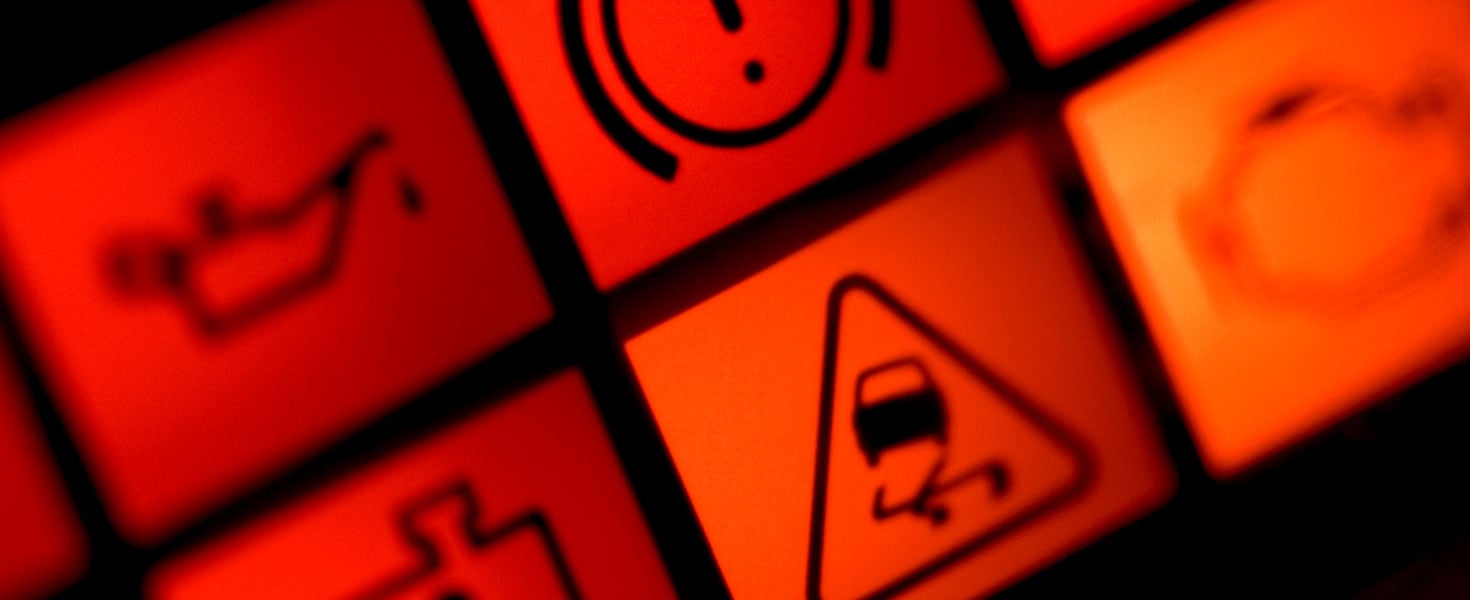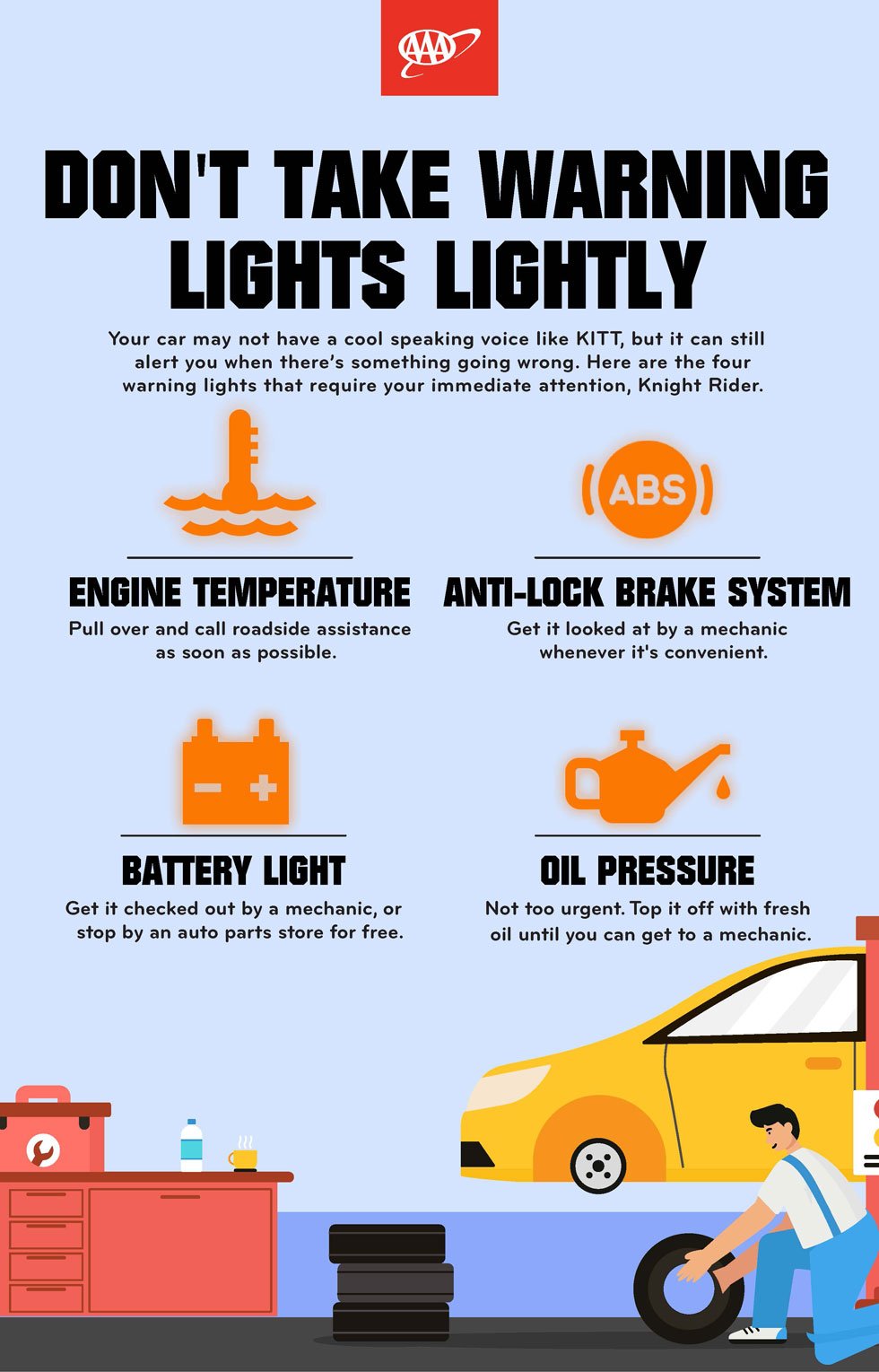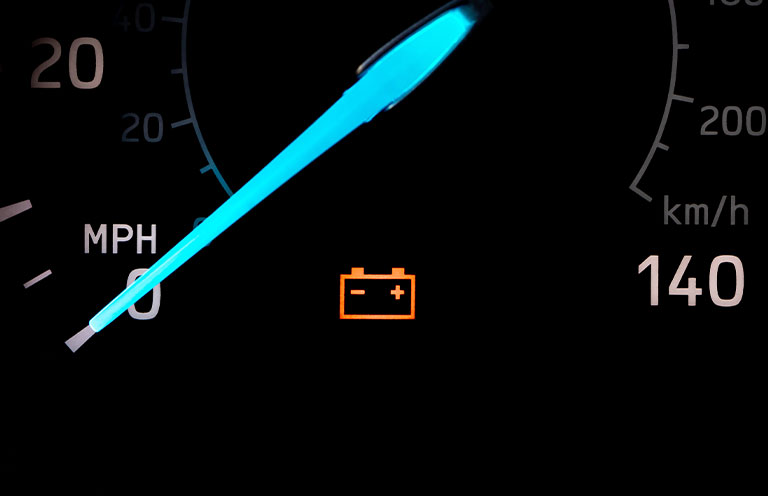


Unless you’re a new driver, chances are you know the feeling the first time you notice a new dashboard light. Some lights like the low fuel gas pump or low tire pressure indicator are easy enough to fix on your own. Then there are lights we don’t see as often. These lights are usually red and strike a how-expensive-is-this-going-to-be fear within us; a fear we may be tempted to ignore in hopes it will just go away.
Sometimes, the warnings do just go away on their own. Sometimes, it’s true, just tightening your gas cap can turn off a check engine light (more on this later). But we would hate it if hoping and tightening are your best plans of action the next time you have a dashboard warning to address.
In this article, we’re going to review the top four dashboard indicators you should never ignore. Generally speaking, the severity of your vehicle’s issue is relative to the color of the light. While green and blue lights merely indicate that a system is engaged or active, orange/amber/yellow lights mean a component of the vehicle is not functioning. Finally, red indicators are typically the most severe warnings, signifying a critical alert or imminent system failures to be handled quickly.
All dashboard lights, no matter their color, should be addressed as soon as possible, but for the purposes of this article, we are going to be addressing the most critical warning lights, what they can mean, and what kind of attention they deserve.

Oil pressure light
This warning light tells us there’s an issue with the vehicle’s oil pressure, either due to low oil or an oil pump that’s unable to move enough oil to keep the internal engine lubricated properly. Although this light should be addressed immediately, the good news is you may be able to buy yourself a bit of time by topping off with fresh oil. But be warned—unaddressed oil lights can lead to premature wear on expensive-to-replace engine components.
Engine temperature warning
Of all the lights in this article, the Engine Temperature Warning is probably the most severe and the worst to be ignored. This light indicates an overheating engine, most likely a result of a faulty cooling system. Continuing to operate an overheating engine risks warping, bending, or breaking critical engine components, resulting in a totaled vehicle. An overheated engine can experience catastrophic wear-and-tear quickly, so it’s critical to pull over and service your vehicle immediately when this light comes on.
Anti-lock brakes
Often shortened to just “ABS”, these lights indicate that the on-board electronics designed to prevent wheel lock and skidding tires under heavy braking conditions are not functioning properly. This light could indicate something as minor as a bad sensor or it could point to something worse, like faulty wheel bearings. Whatever the case, these lights should never be ignored and need a mechanic’s attention.

Battery light
While this could indicate a problem with your battery, what the light means is that there is an issue with your vehicle’s charging system. When you see this light, check your battery to ensure there’s no corrosion in your connections and they’re still fastened tight. The light could mean you have a faulty alternator or alternator belt, so get your vehicle to a shop as soon as possible or risk being stranded with a vehicle that won’t start.
Although there are many dashboard lights, we feel the four above are the most important and impossible-to-ignore.
Runners-up
Runners-up are the Washer Fluid Indicator light and Check Engine Light.
While washer fluid may seem like a trivial thing to many, in many driving conditions, like muddy roads or salted winter highways, having ample washer fluid is vital for vision and driving safety. The Check Engine Light, similarly, can point to a range of problems in a range of severities. As mentioned at the beginning, a loose gas cap can trigger a check engine light, so be sure to have a quick glance under your hood for abnormalities and tighten your gas cap to see if the light turns off before you head into see a mechanic.
Attentive drivers who take the time to learn about and understand their on-board communications and take action when opportunities for repair arise, will be rewarded with a reliable ride that lasts well into the future.
